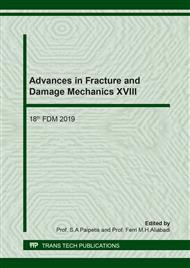p.165
p.171
p.178
p.184
p.190
p.196
p.203
p.209
p.216
Influence of Magnetite Dispersion on Tensile Properties
Abstract:
Nanofibers have high cell affinity due to their fine structure and surface roughness, and are expected to be used as biomaterials. In particular, magnetic nanofibers containing magnetic particles are expected to be used for magnetically induced drug delivery systems and hyperthermia. However, due to the aggregation of the magnetic particles contained in the nanofibers, there is a problem that the aggregation location becomes a starting point of fracture and causes a decrease in tensile strength. In this study, to improve the dispersibility of magnetic particles in Magnetite/PLA nanofiber nonwoven fabrics for suppressing the decrease in tensile strength, magnetite is subjected to surface treatment with oleic acid or stearic acid and ultrasonic agitation. Magnetite/PLA nanofiber nonwoven fabric was prepared by the electrospinning method, and dispersion of magnetite in PLA nanofiber nonwoven fabric and tensile strength were evaluated. Magnetite dispersion was improved by the surface treatment and increasing the ultrasonic agitation time. In particular, by performing the stearic acid treatment and prolonging the ultrasonic agitation time, the magnetite dispersion tended to be improved. This treated Magnetite/PLA nanofiber nonwoven fabric showed higher tensile strength.
Info:
Periodical:
Pages:
190-195
Citation:
Online since:
December 2019
Authors:
Price:
Сopyright:
© 2020 Trans Tech Publications Ltd. All Rights Reserved
Share:
Citation:


